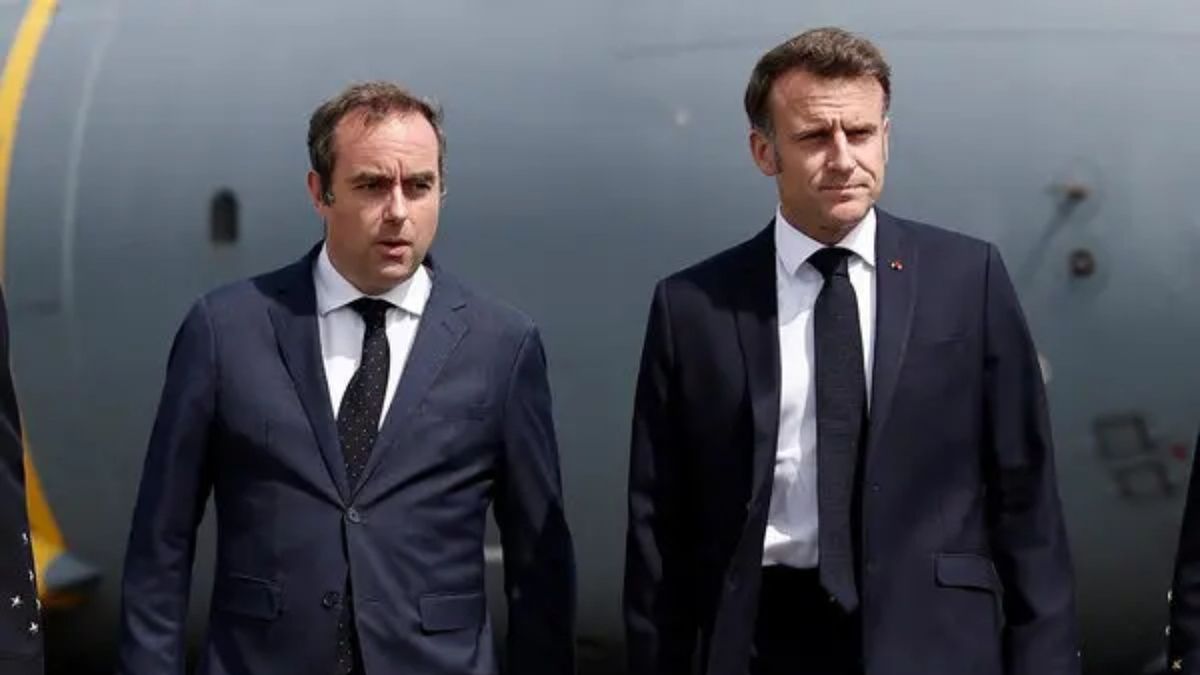The economist who, throughout his career at the IMF, was able to analyze the situation in Argentina, added: “I do not want to anticipate these discussions (between the Fund and the Argentine authorities), but it is certainly something we are seeing”.
Meanwhile, Central Bank sources told Ambit that “It is not a topic that has appeared in meetings with the IMF”. In this regard, specialists in the field maintain that these types of questions are normally discussed between the Fund’s technicians and the Ministry of the Economy. In this sense, Ambit he consulted the Palacio de Hacienda without obtaining a response.
Including the quasi-fiscal deficit of the BCRA in the analysis of the sustainability of the debt is a novelty since before the IMF did not consider the quasi-fiscal debt in the discussion of an agreement.
However, at the beginning of this year a “policy paper” was known, that is to say, a work that was evaluated by the Fund’s board of directors, where it is established that the sustainability of the countries’ debt should consider the quasi-fiscal deficit (debt).
In the introduction, the work indicates that it is proposed “Replace the current framework with a new methodology based on risk assessments.”
Under the title: “Review of the Debt Sustainability Framework” (Review of the Debt Sustainability Framework For Market Access Countries), the 124-page study suggests that the Fund will consider, in addition to the fiscal, also the quasi-fiscal deficit in the analysis of the countries’ debt.
Until now, the sustainability analysis of the public sector debt stock was not incorporated into the BCRA debt because it was based on the premise that Central Banks do not have a quasi-fiscal deficit (most countries in the world do not).
In one of the chapters where the debt situation of various countries was analyzed, there is a reference to Argentina. It points out that during the years 2006-07 / 2010-11 “with limited or no access to international capital markets, the central government relied heavily on the balance sheet of the Central Bank to finance its deficit (IMF Country Report No. 16/69) ”, analysis that is also applied today.
Now the Fund proposes that the BCRA debt should be incorporated into the analysis of the sustainability of the public sector debt stock.
In point 40 of the paper you can read “The new framework will address the complex problems related to the consolidation of the Central Bank. Will only propose in cases of Central Banks with large negative capital positions and / or when the authorities of the country consider that the monetary authority is involved in significant monetary financing of the budget and / or quasi-fiscal activities ”.
In addition, consolidation is considered appropriate to fully capture public debt, its risks and could benefit the dialogue on the policies to be applied.
Economists consulted by Ámbito agree that this approach to debt will make the country’s negotiation with the IMF more complex and will require a greater fiscal effort.
“There is no margin to raise the rate”
Marina Dal Poggetto (Eco Go): At this level of remunerated liabilities and with few net reserves in the BCRA (very few if the IMF is paid again in December) there is no margin to raise the interest rate to stabilize the demand for pesos without generating a problem with the quasi fiscal.
With negative peso rates mounted on inflation that today runs at 50%, the Leliqs snowball is not present, but with this combination of relative prices including a dollar rate at 21%, the gap is 97% and With this gap, there is no reserve accumulation program that can be implemented.
Amen from risk of an increase in the speed of money circulation that puts more pressure on the gap and inflation.
Needed a comprehensive program that requires a political flow (in addition to the decision to finally move late with an agreement with the Fund) that I understand today the Government does not have, especially if the result of the PASO in November is replicated.
“They will be tougher in reducing the deficit”
Rodolfo Santangelo (MacroView): In the IMF’s philosophy, including consideration of the quasi-fiscal deficit implies that they will be tougher in terms of the goal of reducing the primary deficit and monetary issue.
It is about taking it into account in the design of the fiscal program, the speed of reduction of the primary deficit and eventually having a surplus at some point if one day you want to have positive interest rates. Is that for now – with negative interest rates – this problem is less, but with positive interest rates, one day it will be greater.
“We have a quasi-fiscal deficit close to 3% of GDP “
Lorenzo Sigaut Gravina (Empiria Consultores): In the 80s there was a lot of monetary issuance and the point of the quasi-fiscal deficit was a relevant issue for Latin America and today it is again for Argentina.
Effectively, we have a quasi-fiscal deficit close to 3 points of GDP, The product of two issues: in 2019 because we paid a very high Lebac rate and remunerated liabilities from the BCRA and in 2020, although the rate was very low, we had to attend due to the pandemic. This implied issuance and so that prices do not heat up, the stock of Leliq and passive passes had to be sterilized and greatly increased. In this context, Argentina finds itself with a high stock that pays a rate lower than inflation and that served to contain something.
If this topic was included, it would be another source of rispideces because the IMF can ask you for more things. Either you reduce the quasi-fiscal deficit or the Treasury has to have a higher surplus. In either option, this is going to complicate. We have to see what the IMF is asking for, but that is fine because the Fund will ask that the consolidated public sector debt tend to be reduced.
“It is the largest source of monetary issue”
Camilo Tiscornia – C&T Asociados: It is very good to incorporate the quasi-fiscal deficit, especially in countries like Argentina that have to lower inflation. Obviously there may be order in the Treasury accounts, but if the BCRA issues like crazy because it has to pay more interest for the absorption instruments, the truth is that it is not a business.
So far this year a trillion pesos were issued in the payment of interest on absorption instruments, it is by far the largest source of monetary issue, more than direct financing from the Treasury and more than the purchase of dollars from the exchange market.
Logically in all this there is a game between inflation and devaluation. To the extent that the BCRA has reserves, it can offset the cost of the Leliqs with devaluation, but precisely If you want to lower inflation, devalue less, you want less nominality of the economy, you definitely have to address the quasi-fiscal deficit. So I think it’s okay for the IMF to do it. Economists always ask for a compressive exchange, monetary and fiscal plan and incorporate the BCRA into all of this, almost all of them talk about the need to clean up the BCRA’s balance sheet.
David William is a talented author who has made a name for himself in the world of writing. He is a professional author who writes on a wide range of topics, from general interest to opinion news. David is currently working as a writer at 24 hours worlds where he brings his unique perspective and in-depth research to his articles, making them both informative and engaging.




